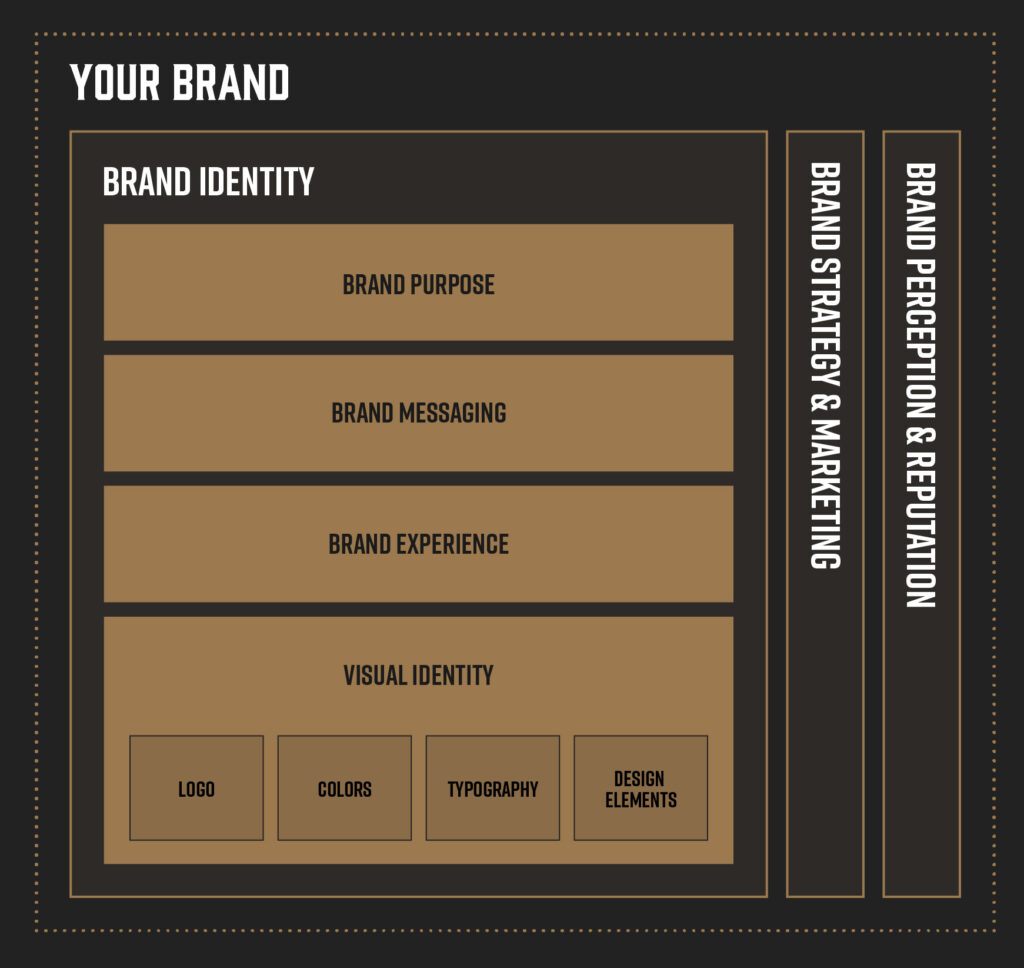A successful B2B brand identity is clear, consistent, and built to earn trust with a professional audience. It reflects the company’s values, differentiates it from competitors, and communicates reliability across every touchpoint.
When most people think of a brand, their minds immediately jump to the visual components— logo, colors, and fonts. While these elements are incredibly important to a brand, they’re just one piece of a much larger puzzle. A successful brand identity goes far beyond visuals. It encompasses the way a company communicates, the values it stands for, and the experience it creates for its customers. At its core, brand identity is the essence of how a business is perceived.
A strong brand identity is an invaluable asset for any business, helping to differentiate it from competitors, build trust with customers, and foster long-term loyalty. This is especially true for B2B companies, where the market is so oversaturated. In this blog, we’ll explore the various elements that make up a successful B2B brand identity and how they work together to create a cohesive, powerful presence in the market.

A Clear and Compelling Brand Purpose
A successful brand identity starts with a clear sense of purpose. This is not necessarily what your company does or creates, but the reason why your company exists and the difference you aim to make in the world. Your brand purpose forms the foundation of your identity, guiding every decision, from product development to hiring to marketing strategies.
A clearly articulated brand purpose gives customers a reason to connect with your business on a deeper level. It helps them understand what you stand for and why they should choose you over competitors who may offer similar products or services.
Consistent Brand Messaging
Messaging is another crucial component of brand identity. It’s not enough to have a strong purpose—you need to communicate it effectively. Consistency in messaging builds trust and familiarity, helping customers understand what to expect from your brand. Your brand messaging should reflect your core values and resonate with your target audience. This includes everything from the language you use on your website and social media to how you communicate in advertising campaigns and customer interactions.
A consistent tone of voice is key to maintaining this messaging. Tone of voice defines how your brand speaks to its audience, shaping the overall perception of your company. It’s not just what you say, but how you say it. Tone of voice reflects your brand’s personality—whether it’s formal, casual, authoritative, or friendly—and sets the emotional tone of all communication. When your tone of voice is consistent and aligned with your brand values, it builds trust, makes your messaging more relatable, and strengthens the emotional connection with your audience. Ultimately, a well-defined and consistent tone of voice enhances customer engagement and reinforces brand loyalty by creating a more human and relatable connection.
A Strong Visual Identity
While a brand identity is about much more than just visuals, it’s impossible to ignore the importance of a well-designed visual identity. A distinctive logo, robust color scheme and typography system, and design elements like consistent photography guidelines or custom illustrations and icons, are all examples of a visual identity. They are the most visible and easy to recognize representations of your brand, making them essential components of brand identity.
Using these elements consistently across all visual touchpoints is essential. Your website and/or product, social media, advertising campaigns, and marketing materials should all adhere to the same visual guidelines to create a cohesive brand experience. This consistency helps reinforce brand recognition, making it easier for customers to identify your business no matter where they encounter it.
Brand Experience and Customer Interaction
A successful brand identity isn’t just what you say or how you look—it’s also how you make customers feel. Brand experience encompasses every interaction a customer has with your brand, from visiting your website and using your product, to speaking with customer service or sales representatives. These one-on-one conversations are also a perfect opportunity to utilize your brand voice. Ensuring a positive and consistent brand experience across all touchpoints is essential for reinforcing your brand identity.
Consistency, Consistency, Consistency
Consistency is one of the most important aspects of a successful brand identity. It ties all the other elements—purpose, messaging, visual identity, and customer experience—together into a unified whole. A consistent brand identity helps build trust with your audience by presenting a reliable and cohesive image across all platforms and touchpoints, reinforcing recognition and trust.
Without consistency, your brand identity becomes fragmented and confusing, making it harder for customers to recognize, trust, and connect with your business. Consistency in branding ensures that customers can easily recognize your business, even in a crowded B2B marketplace. It makes your brand more memorable, strengthens loyalty, and increases your overall credibility.
Building a Successful B2B Brand Identity
A successful B2B brand identity is the combination of many elements working together to create a cohesive whole. It’s not just your logo or visual design—it’s the values you stand for, the way you communicate, and the experiences you create for your customers. And by doing so consistently, you will ensure a lasting impression for your audience, strengthening brand loyalty and better differentiating you from your competitors.
Ready to dive into your brand? The VSSL crew can help! We’ve helped companies of all sizes establish and enforce a consistent, strategic brand identity that carves differentiation and fosters brand loyalty. Reach out today if you want to learn more about our services and process.
